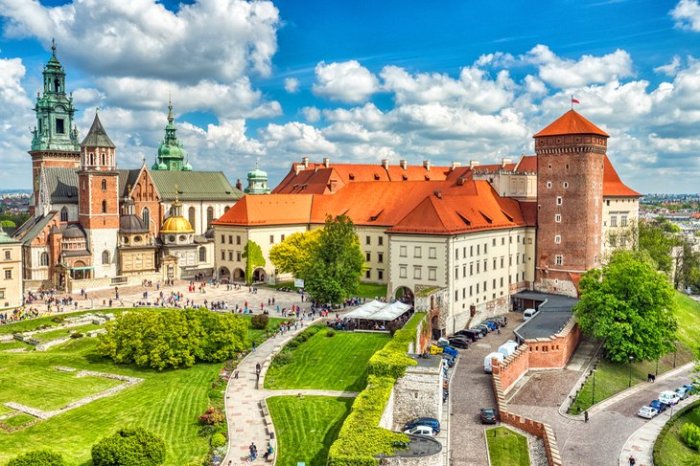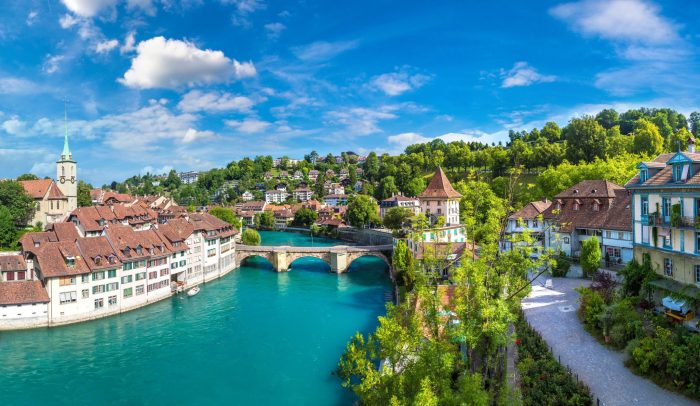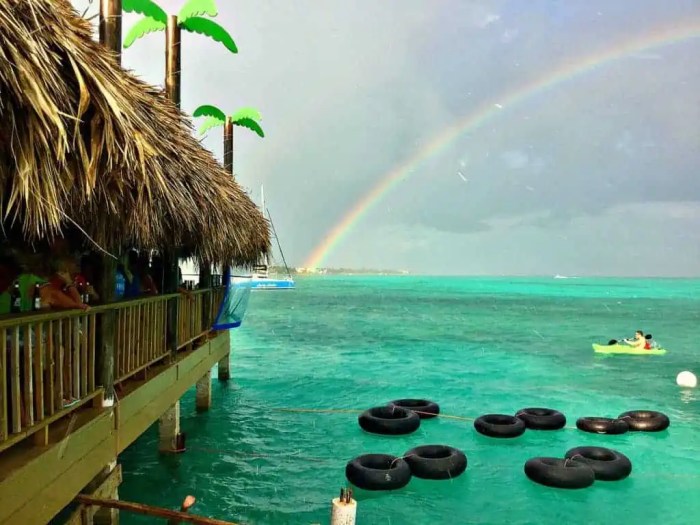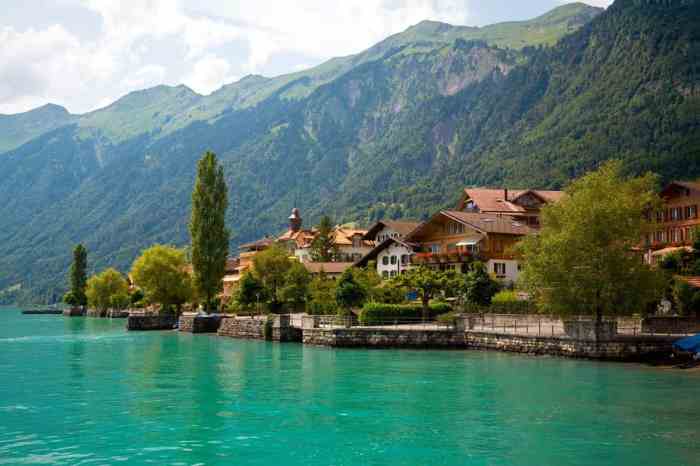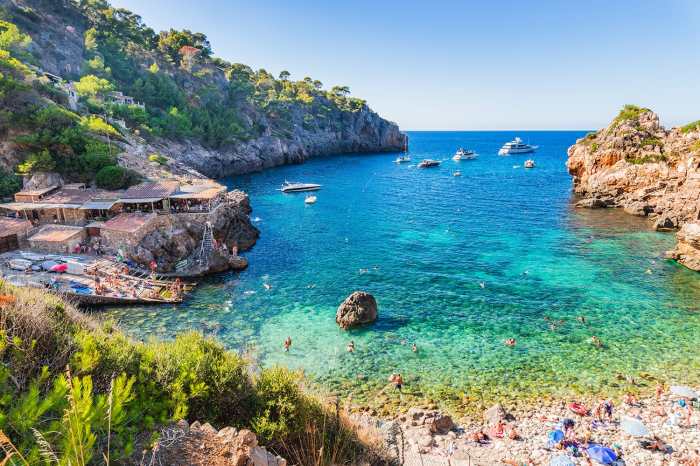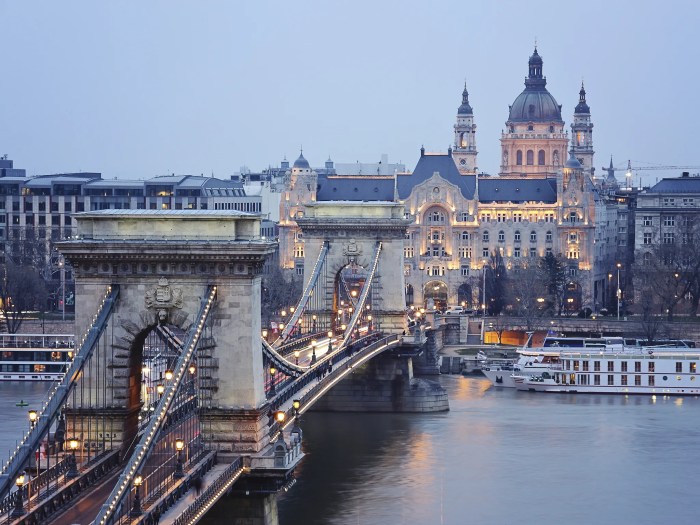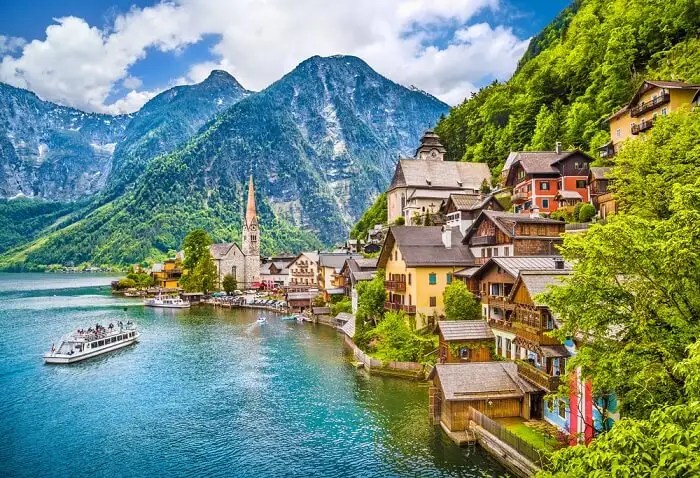Top 10 Places To Visit In Poland
Top 10 Places To Visit In Poland, this guide is your passport to a country bursting with history, culture, and natural beauty. From ancient castles and bustling cities to serene lakes and majestic mountains, Poland offers something for everyone. Whether you’re a history buff, a foodie, or an adventure seeker, this list will inspire you to plan your next trip to this captivating European gem.
Poland has a rich history, a vibrant culture, and a diverse landscape. From the ancient city of Krakow, known for its stunning architecture and historical significance, to the charming city of Warsaw, a blend of modern and traditional, Poland offers a captivating experience.
You can explore the medieval castles, wander through charming cobblestone streets, and indulge in delicious traditional cuisine. Whether you’re looking for a relaxing getaway or an adventurous escape, Poland is a destination that will leave a lasting impression.
Historical Gems
Poland’s rich history is woven into the fabric of its cities, towns, and landscapes. From ancient castles to medieval squares, each site whispers tales of kings, queens, and empires. These historical gems offer a captivating glimpse into the country’s past and its enduring legacy.
Poland’s Top Historical Sites
Poland boasts an impressive collection of historical landmarks. Here are five of the most historically significant places to visit:
- Krakow: Krakow, the former capital of Poland, is a treasure trove of history. Its medieval Old Town, a UNESCO World Heritage Site, is home to the Wawel Castle, the Royal Palace, and the iconic Market Square. The city was also a center of Jewish culture and learning, and its historic Jewish Quarter, Kazimierz, is a poignant reminder of its rich heritage.
- Warsaw: Warsaw, Poland’s current capital, has a complex and fascinating history. After being largely destroyed during World War II, the city was painstakingly rebuilt, with many of its historical buildings restored to their former glory. The Royal Castle, the Old Town, and the Warsaw Uprising Monument are all powerful reminders of the city’s resilience and spirit.
- Gdansk: Gdansk, a bustling port city on the Baltic Sea, played a crucial role in the Solidarity movement, which helped bring down the communist regime in Poland. The city’s historic Old Town, with its cobbled streets and colorful buildings, is a testament to its rich Hanseatic heritage.
The shipyard, where the Solidarity movement began, is now a UNESCO World Heritage Site and a symbol of Poland’s struggle for freedom.
- Malbork Castle: Malbork Castle, a massive medieval fortress, is one of the largest brick castles in the world. It was built by the Teutonic Knights, a powerful military order, and served as their headquarters for centuries. The castle’s imposing walls, towers, and courtyards offer a glimpse into the power and grandeur of the Knights.
- Auschwitz-Birkenau: Auschwitz-Birkenau, a former Nazi concentration camp, is a sobering reminder of the horrors of the Holocaust. Visiting this site is a powerful and moving experience that highlights the importance of remembering the past and fighting against intolerance and hatred.
A Closer Look at Poland’s Historical Gems
Here is a table providing more information about each of these historical sites:
| Location | Historical Significance | Key Attractions | Tips for Visitors |
|---|---|---|---|
| Krakow | Medieval capital of Poland; home to Wawel Castle, Royal Palace, and Market Square; center of Jewish culture and learning | Wawel Castle, Royal Palace, Market Square, Kazimierz (Jewish Quarter), St. Mary’s Basilica | Spend at least 2-3 days to explore the city; consider a guided tour of Wawel Castle; try traditional Polish food in Kazimierz |
| Warsaw | Current capital of Poland; rebuilt after World War II; site of the Warsaw Uprising | Royal Castle, Old Town, Warsaw Uprising Monument, Palace of Culture and Science, Lazienki Park | Visit the Warsaw Uprising Museum to learn about the city’s history; take a walk through the Old Town; enjoy a boat ride on the Vistula River |
| Gdansk | Important port city on the Baltic Sea; birthplace of the Solidarity movement; Hanseatic city | Old Town, Gdansk Shipyard, St. Mary’s Church, Golden Gate, Neptune Fountain | Visit the European Solidarity Centre to learn about the Solidarity movement; take a boat trip on the Motlawa River; enjoy fresh seafood in the Old Town |
| Malbork Castle | Massive medieval fortress built by the Teutonic Knights; one of the largest brick castles in the world | Castle walls, towers, courtyards, Knights’ Hall, museum exhibits | Allow at least 3-4 hours to explore the castle; take a guided tour to learn about the history of the Teutonic Knights; enjoy the views from the castle walls |
| Auschwitz-Birkenau | Former Nazi concentration camp; a reminder of the Holocaust | Prison blocks, gas chambers, crematoria, museum exhibits | Visit the site with a respectful and reflective attitude; consider a guided tour to learn about the history of the camp; be prepared for a powerful and emotional experience |
Cultural Immersion
Poland offers a rich tapestry of cultural experiences that go beyond its historical landmarks. To truly understand the soul of Poland, immerse yourself in its vibrant traditions, customs, and arts.
Traditional Polish Crafts
The craftsmanship of Poland is a testament to its rich history and artistic heritage. From intricate folk art to exquisite ceramics, these crafts are not just souvenirs; they are living expressions of Polish culture. * Ceramics:The tradition of pottery in Poland dates back centuries, with each region boasting its unique style and techniques.
The iconic Bolesławiec pottery, known for its vibrant blue and white patterns, is a popular choice for both practical and decorative purposes.
Poland is a beautiful country with tons of cool places to check out, like the medieval city of Kraków or the historic Wawel Castle. But if you’re looking for a different kind of vibe, maybe something with stunning mountains and crystal-clear water, you should definitely check out Top 10 Places To Visit in Montenegro.
Montenegro is like the hidden gem of the Balkans, and it’s definitely worth adding to your travel bucket list. And once you’ve soaked up the sun and explored the fjords, you can head back to Poland and hit up the charming streets of Warsaw or the vibrant nightlife of Gdańsk.
Folk Art
Polish folk art is characterized by its vibrant colors, intricate designs, and symbolic motifs. These intricate patterns often depict traditional scenes, folklore, and religious themes. From painted eggs (pisanki) to intricately carved wooden figures, Polish folk art offers a glimpse into the country’s cultural heritage.
Lacemaking
The delicate art of lacemaking has been a cherished tradition in Poland for centuries. From the intricate bobbin lace of Krosno to the delicate needle lace of Łowicz, Polish lacemaking is a testament to the skill and artistry of Polish craftspeople.
Polish Cuisine
Polish cuisine is a delightful blend of flavors and traditions. Beyond the famous pierogi, Polish food offers a range of hearty and flavorful dishes that reflect the country’s history and agricultural heritage.* Pierogi:These iconic dumplings are a staple of Polish cuisine, filled with savory and sweet ingredients.
From the classic potato and cheese pierogi to the decadent meat-filled versions, there’s a pierogi for every palate.
Bigos
This hearty stew is a true Polish comfort food, made with sauerkraut, various meats, and often mushrooms. It’s a dish that embodies the spirit of Polish hospitality and the use of local ingredients.
Zupa ogórkowa
This refreshing cold soup made with cucumbers, dill, and often potatoes, is a popular choice during the summer months. It’s a light and flavorful dish that reflects the use of fresh, seasonal ingredients in Polish cuisine.
Polish Music and Dance
Polish music and dance are vibrant expressions of the country’s cultural heritage. From the lively folk dances to the haunting melodies of traditional music, these art forms offer a unique window into the soul of Poland.* Folk Music:Polish folk music is rich in tradition and storytelling, often reflecting themes of love, loss, and the beauty of nature.
Instruments like the fiddle, the accordion, and the flute are commonly used in folk music performances.
Folk Dance
Polish folk dances are known for their lively rhythms and intricate steps. From the energetic “Polonaise” to the graceful “Mazurka,” each dance has its own unique story and significance.
Classical Music
Poland’s got some seriously cool spots, like the Wawel Castle in Krakow and the charming Old Town in Warsaw. If you’re feeling adventurous, maybe you’d want to check out the Top 25 Places To visit in Portugal after your Polish adventure.
But honestly, you can’t go wrong with a trip to Poland – it’s got something for everyone!
Poland has a rich tradition of classical music, with composers like Chopin and Paderewski making significant contributions to the world of music. Visiting a concert or opera in Poland is a chance to experience the country’s musical heritage at its finest.
Nature’s Beauty
Poland isn’t just about history and culture; it’s also home to breathtaking natural landscapes. From majestic mountains to pristine lakes, Poland offers a diverse range of outdoor experiences for nature lovers.
Top 3 Natural Wonders of Poland
Poland’s natural wonders are a testament to the country’s diverse geography. Here are three must-visit destinations for those seeking an escape into nature:
- The Tatra Mountains: Poland’s highest mountain range, the Tatras, offer stunning views, challenging hiking trails, and opportunities for skiing and snowboarding in the winter.
- The Masurian Lake District: This region is known for its numerous lakes, forests, and charming towns. It’s a perfect destination for kayaking, sailing, and simply relaxing by the water.
- The Bialowieza Forest: This ancient forest is home to a diverse ecosystem, including the majestic European bison. Visitors can explore the forest on foot, by bike, or even on horseback.
Detailed Descriptions and Activities
| Location | Description | Activities | Best Time to Visit |
|---|---|---|---|
| Tatra Mountains | The Tatras are Poland’s highest mountain range, offering stunning views, challenging hiking trails, and opportunities for skiing and snowboarding in the winter. | Hiking, rock climbing, skiing, snowboarding, mountain biking | Summer for hiking and mountain biking, winter for skiing and snowboarding |
| Masurian Lake District | This region is known for its numerous lakes, forests, and charming towns. It’s a perfect destination for kayaking, sailing, and simply relaxing by the water. | Kayaking, sailing, swimming, fishing, cycling | Summer for water activities, autumn for scenic beauty |
| Bialowieza Forest | This ancient forest is home to a diverse ecosystem, including the majestic European bison. Visitors can explore the forest on foot, by bike, or even on horseback. | Hiking, cycling, horseback riding, wildlife watching | Spring and summer for wildlife viewing, autumn for scenic beauty |
City Escapes

Poland’s vibrant cities offer a unique blend of history, culture, and modern energy, making them perfect for a city break. From the medieval charm of Krakow to the modern allure of Warsaw, each city boasts a distinct personality and a plethora of attractions to explore.
The Top 3 Most Vibrant Cities for a City Break
These cities offer a dynamic mix of historical landmarks, bustling nightlife, and diverse culinary experiences.
- Krakow:The former royal capital of Poland, Krakow exudes a timeless charm with its cobblestone streets, majestic Wawel Castle, and the vibrant Kazimierz district.
- Warsaw:Poland’s modern capital, Warsaw, offers a captivating blend of history and contemporary culture.
- Gdansk:Located on the Baltic Sea coast, Gdansk boasts a rich maritime history, charming Old Town, and a vibrant culinary scene.
Krakow: A Blend of History and Culture
Krakow is a city that seamlessly blends medieval charm with modern energy. Its historic center, a UNESCO World Heritage Site, is a testament to the city’s rich past.
- Wawel Castle:Perched atop Wawel Hill, the castle served as the residence of Polish kings for centuries. Explore its grand halls, admire the impressive architecture, and delve into the history of the Polish monarchy.
- Main Market Square:The heart of Krakow, the Main Market Square is a vibrant hub of activity. Admire the stunning architecture of the Cloth Hall, relax in one of the many cafes, and soak in the lively atmosphere.
- Kazimierz:Once the Jewish quarter of Krakow, Kazimierz is now a trendy neighborhood known for its eclectic shops, vibrant nightlife, and delicious Jewish cuisine.
Warsaw: A City Rebuilt
Warsaw is a city that has risen from the ashes of World War II, showcasing a remarkable resilience and a vibrant spirit.
- Old Town:Reconstructed with meticulous detail after the war, the Old Town is a testament to Warsaw’s rich history. Explore its cobblestone streets, admire the colorful buildings, and enjoy a traditional Polish meal in one of the many restaurants.
- Royal Castle:This grand palace, the official residence of Polish monarchs, was destroyed during the war but meticulously rebuilt.
- Warsaw Uprising Museum:This poignant museum commemorates the heroic Warsaw Uprising of 1944, offering a powerful glimpse into the city’s wartime struggles.
Gdansk: A Maritime City with a Rich History
Gdansk, a bustling port city on the Baltic Sea, offers a unique blend of maritime history, charming architecture, and a lively cultural scene.
- Old Town:The heart of Gdansk, the Old Town is a UNESCO World Heritage Site. Wander through its cobblestone streets, admire the colorful buildings, and enjoy the vibrant atmosphere.
- Long Market:The main thoroughfare of the Old Town, Long Market is lined with historic buildings, shops, and restaurants.
- Solidarity Museum:This museum commemorates the Solidarity movement, a pivotal moment in Polish history, offering insights into the fight for democracy and freedom.
Architectural Marvels
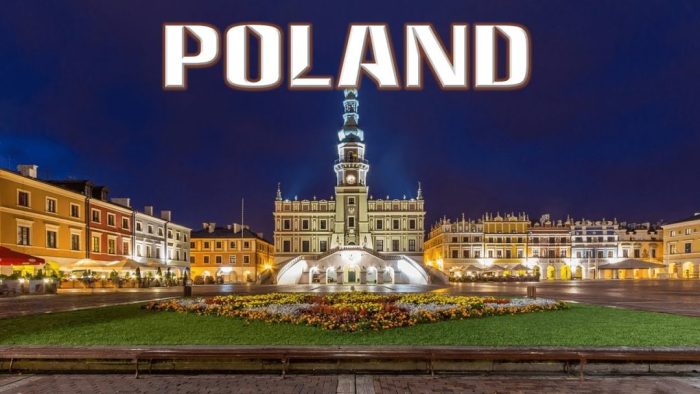
Poland is a treasure trove of architectural wonders, boasting a rich history reflected in its stunning structures. From medieval castles to modern masterpieces, the country’s architectural landscape offers a captivating journey through time. Let’s explore some of Poland’s most awe-inspiring architectural marvels.
Architectural Masterpieces in Poland
Poland’s architectural heritage is a testament to its diverse history and cultural influences. Here are three architectural masterpieces that exemplify the country’s architectural prowess:
- Wawel Royal Castle (Krakow)
- St. Mary’s Basilica (Krakow)
- The Palace of Culture and Science (Warsaw)
These structures showcase a range of architectural styles, from Gothic and Renaissance to Baroque and Modernist, each telling a unique story of Poland’s past.
Wawel Royal Castle
Wawel Royal Castle, perched on Wawel Hill in Krakow, is a symbol of Polish history and power. This magnificent castle complex has served as a royal residence, a center of political and cultural life, and a symbol of national identity for centuries.
The castle’s history dates back to the 11th century, when a wooden fortress was built on the site. Over the centuries, the castle was expanded and remodeled, resulting in a complex of buildings in various architectural styles. The castle’s most prominent feature is its Renaissance courtyard, designed by Italian architect Francesco Fiorentino in the 16th century.
This courtyard features a beautiful arcade and a fountain, showcasing the influence of Italian Renaissance architecture on Polish design.The castle is also home to a number of other notable buildings, including the Wawel Cathedral, the Royal Chambers, and the Armoury.
The Wawel Cathedral, built in the 14th century, is a stunning example of Gothic architecture. The cathedral houses the tombs of Polish kings and other notable figures, including the remains of St. Stanislaus, the patron saint of Poland.
Wawel Royal Castle: Stories and Legends
Wawel Castle is steeped in history and legend. One of the most famous legends associated with the castle is the story of the Wawel Dragon. According to legend, a fearsome dragon terrorized Krakow until it was slain by a cunning shoemaker.
The dragon’s lair is said to be located beneath the castle, and its skeleton is displayed in the castle’s courtyard.The castle also played a pivotal role in the history of Poland. It was the site of many important events, including royal weddings, coronations, and diplomatic meetings.
During World War II, the castle was occupied by the Nazis and suffered significant damage. After the war, the castle was painstakingly restored and reopened to the public in 1964.
St. Mary’s Basilica
St. Mary’s Basilica, located in Krakow’s main market square, is a stunning example of Gothic architecture. This church, built in the 14th century, is known for its distinctive brick facade and its two towers, one of which is taller than the other.The basilica’s interior is equally impressive, featuring a soaring vaulted ceiling, stained glass windows, and a number of ornate altars.
The most notable feature of the basilica is its main altar, which is adorned with a massive altarpiece carved by the famous Polish sculptor, Veit Stoss, in the 15th century. This altarpiece, depicting the life of the Virgin Mary, is considered one of the finest examples of Gothic art in Poland.
St. Mary’s Basilica: Stories and Legends
St. Mary’s Basilica is also associated with a number of interesting stories and legends. One of the most famous is the story of the “Hejnal” trumpet call. Every hour, a trumpeter plays a melody from one of the basilica’s towers.
The melody is abruptly cut off halfway through, reflecting the legend of a trumpeter who was shot in the throat by a Tartar arrow while sounding the alarm during a siege in the 13th century.The basilica is also said to be haunted by the ghost of a monk who was buried alive in the church’s crypt.
The monk is said to appear in the church at night, searching for his lost love.
The Palace of Culture and Science
The Palace of Culture and Science, a towering skyscraper in the heart of Warsaw, is a unique and controversial architectural landmark. This building, built in the 1950s as a gift from the Soviet Union, is a prime example of Stalinist architecture.
The palace, with its imposing facade and its grand interior, is a symbol of Soviet influence in Poland. However, it is also a popular tourist destination and a symbol of Warsaw’s resilience. The palace houses a variety of cultural institutions, including a theater, a concert hall, a museum, and a library.
The Palace of Culture and Science: Stories and Legends
The palace is surrounded by a number of legends and stories. One legend claims that the building is haunted by the ghost of a Polish architect who was forced to work on the project against his will. Another legend states that the palace is built on a site where a medieval church once stood, and that the church’s bell can still be heard ringing at night.The palace has been a source of controversy since its construction.
Some Poles view the building as a symbol of Soviet oppression, while others see it as a testament to Warsaw’s resilience. The palace remains a prominent landmark in Warsaw and a symbol of the city’s complex history.
Architectural Masterpieces of Poland: A Table
| Location | Architectural Style | Historical Significance | Key Features |
|---|---|---|---|
| Wawel Royal Castle, Krakow | Gothic, Renaissance, Baroque | Royal residence, center of political and cultural life, symbol of national identity | Renaissance courtyard, Wawel Cathedral, Royal Chambers, Armoury |
| St. Mary’s Basilica, Krakow | Gothic | Important religious site, symbol of Krakow’s history | Brick facade, two towers, main altar by Veit Stoss |
| The Palace of Culture and Science, Warsaw | Stalinist | Symbol of Soviet influence, testament to Warsaw’s resilience | Imposing facade, grand interior, cultural institutions |
Hidden Treasures
Poland’s allure goes beyond its well-known cities and historical sites. Discover a hidden world of charming towns, unique traditions, and breathtaking landscapes that offer an authentic and enriching experience. Venture off the beaten path to unearth these lesser-known gems, each with its own captivating story to tell.
The Picturesque Town of Kazimierz Dolny
Nestled on a hill overlooking the Vistula River, Kazimierz Dolny is a charming town that transports visitors back in time. Its cobblestone streets, Renaissance architecture, and vibrant artistic community create a unique atmosphere.The town’s history dates back to the 14th century, and its rich past is reflected in its well-preserved architecture.
Admire the impressive Gothic Church of St. John the Baptist, the 16th-century Town Hall, and the historic Jewish quarter, which is home to the Kazimierz Dolny Synagogue. Kazimierz Dolny is also a haven for artists, with numerous galleries showcasing the works of local and international artists.
The town hosts several art festivals throughout the year, attracting visitors from all over the world. Enjoy the picturesque views of the Vistula River from the town’s numerous viewpoints, or take a stroll through the charming market square, where you can find local crafts, souvenirs, and delicious treats.
- Explore the Kazimierz Dolny Synagogue:This historic synagogue, built in the 17th century, offers a glimpse into the town’s Jewish heritage. It has been restored and is now a museum that showcases the history of the Jewish community in Kazimierz Dolny.
- Visit the Kazimierz Dolny Art Galleries:Discover the town’s vibrant art scene by exploring the numerous art galleries showcasing the works of local and international artists. The galleries feature a wide range of styles, from traditional to contemporary.
- Take a Scenic Walk along the Vistula River:Enjoy the picturesque views of the Vistula River from the town’s numerous viewpoints, or take a leisurely walk along the riverbank. The river offers a peaceful escape from the bustling city life.
- Explore the Kazimierz Dolny Market Square:The market square is the heart of the town, where you can find local crafts, souvenirs, and delicious treats. It’s a great place to experience the town’s vibrant atmosphere.
Foodie Delights: Top 10 Places To Visit In Poland
Poland is not just a land of beautiful castles and charming towns; it’s also a haven for food lovers. The country boasts a rich culinary tradition that has been passed down through generations, resulting in hearty, flavorful dishes that will tantalize your taste buds.
Traditional Polish Dishes and Ingredients, Top 10 Places To Visit In Poland
Polish cuisine is known for its use of fresh, seasonal ingredients, often sourced locally. Many dishes feature meat, particularly pork, beef, and poultry, along with potatoes, cabbage, and various grains. Sauerkraut, a fermented cabbage, is a staple ingredient in many Polish dishes, adding a tangy and slightly sour flavor.
Other popular ingredients include mushrooms, onions, garlic, and herbs.
Must-Try Culinary Experiences
Here are three culinary experiences you shouldn’t miss on your Polish adventure:
Pierogi
Pierogi are a type of dumpling that is a national dish of Poland. They are made with a thin dough that is filled with various savory or sweet ingredients. Some popular pierogi fillings include:
- Cheese and Potato:This is a classic filling, combining creamy mashed potatoes with a tangy cheese, often feta or sheep’s milk cheese.
- Meat:Ground pork, beef, or lamb are common meat fillings, often seasoned with onions, garlic, and spices.
- Sauerkraut and Mushrooms:This filling is a hearty and flavorful combination of sauerkraut and sautéed mushrooms, often with a touch of bacon or sausage.
Pierogi are typically served boiled, fried, or baked, and they can be enjoyed as a main course or a side dish.
Bigos
Bigos is a hearty stew made with sauerkraut, meat, and various other ingredients. It is a traditional Polish dish that is often served during the winter months. The meat used in bigos can vary depending on the region, but common ingredients include:
- Pork:Smoked pork sausage, bacon, or pork chops are often used in bigos, adding a smoky and savory flavor.
- Beef:Beef stew meat or ground beef can also be used, adding a richer flavor to the stew.
- Game:In some regions, bigos may also include venison, wild boar, or other game meats, adding a unique and earthy flavor.
Bigos is typically cooked slowly over low heat, allowing the flavors to meld and deepen. It is often served with a dollop of sour cream or a sprinkle of fresh herbs.
Zurek
Zurek is a thick, sour soup made with a fermented rye flour base. It is a traditional Polish dish that is often served during Easter. Zurek is typically made with:
- Sourdough Starter:The base of zurek is a fermented rye flour starter, which gives the soup its characteristic sour flavor.
- Sausage:Polish sausage, such as kielbasa or kabanos, is often added to zurek, adding a savory and smoky flavor.
- Vegetables:Potatoes, carrots, and onions are common vegetables added to zurek, adding sweetness and depth to the soup.
Zurek is often served hot with a hard-boiled egg, a slice of bread, or a dollop of sour cream.
Recommendations for Restaurants and Food Markets
If you’re looking to sample some of Poland’s culinary delights, there are plenty of restaurants and food markets to choose from.
Restaurants
- Restauracja Pod Aniołem (Warsaw):This restaurant is known for its traditional Polish cuisine, including pierogi, bigos, and zurek. It has a charming and historic atmosphere, and the food is consistently excellent.
- Restauracja Zapiecek (Krakow):This chain of restaurants offers a wide variety of traditional Polish dishes, including pierogi, kielbasa, and gołąbki (stuffed cabbage rolls). The food is affordable and tasty, and the restaurants have a lively and welcoming atmosphere.
- Restauracja Stary Młyn (Gdansk):This restaurant is located in a historic watermill and offers a unique dining experience. The menu features traditional Polish dishes, as well as some modern interpretations of classic recipes. The restaurant also has a beautiful view of the Motlawa River.
Food Markets
- Hala Mirowska (Warsaw):This historic market hall is a great place to sample a variety of Polish food products, including fresh produce, meats, cheeses, and baked goods. It’s a great place to experience the hustle and bustle of a traditional Polish market.
- Rynek Główny (Krakow):This market square is located in the heart of Krakow and is a great place to find local souvenirs, crafts, and food stalls. You can find a variety of Polish street food here, including pierogi, zapiekanki (baked bread topped with various ingredients), and langos (deep-fried flatbread).
- Targ Rybny (Gdansk):This fish market is located on the waterfront and is a great place to find fresh seafood, as well as other Polish food products. It’s a lively and colorful market, and a great place to experience the local culture.
Poland is awesome, with tons of history and cool cities like Krakow and Warsaw. But if you’re looking for a little sunshine and some amazing scenery, you gotta check out Madeira. It’s a Portuguese island with incredible hiking trails, lush forests, and volcanic beaches.
If you’re looking for a list of the best spots to visit, check out this Top 10 Places To Visit in Madeira article. After Madeira, you can come back to Poland and check out the medieval castles and charming villages – there’s something for everyone here!
Traditional Polish Recipes
Here are a few traditional Polish recipes that you can try at home:
- Pierogi Ruskie (Ukrainian-Style Pierogi):These pierogi are filled with a mixture of mashed potatoes, fried onions, and twaróg (a type of Polish farmer’s cheese).
- Bigos with Sauerkraut, Pork, and Mushrooms:This hearty stew is a classic Polish dish that is perfect for a cold winter day.
- Zurek with Sausage and Vegetables:This thick and sour soup is a traditional Polish dish that is often served during Easter.
- Gołąbki (Stuffed Cabbage Rolls):These cabbage rolls are filled with a mixture of ground meat, rice, and vegetables, and are often served with a tomato sauce.
- Chlodnik (Cold Beet Soup):This refreshing soup is made with beets, cucumbers, dill, and sour cream, and is often served during the summer months.
Shopping Spree
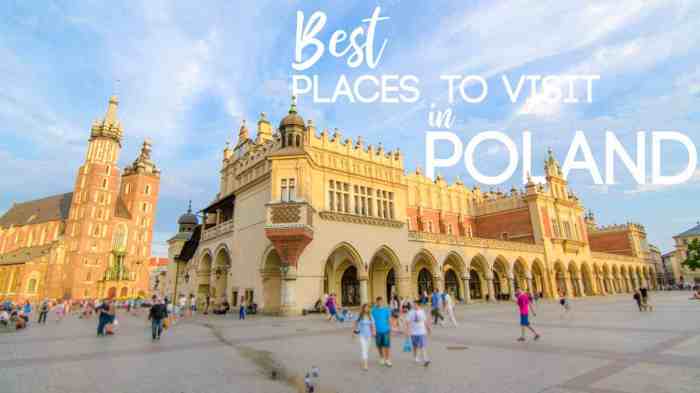
Poland is a shopper’s paradise, offering a diverse range of experiences from traditional markets to modern shopping malls. From handcrafted souvenirs to cutting-edge fashion, you’ll find something to satisfy your shopping desires in this vibrant country.
Top Shopping Destinations
The following are three of the most popular shopping destinations in Poland, each offering a unique shopping experience:
- Krakow: Known for its historic charm, Krakow also boasts a thriving shopping scene. The city’s Old Town is a treasure trove of traditional crafts, with artisans selling their wares in charming boutiques and stalls. You’ll find everything from amber jewelry and hand-painted ceramics to embroidered textiles and wooden toys.
The Main Market Square is a must-visit, with its bustling atmosphere and numerous shops offering a variety of goods.
- Warsaw: Poland’s capital is a modern metropolis with a sophisticated shopping scene. The city’s shopping malls offer a wide selection of international brands, while independent boutiques and designer shops cater to those seeking something unique. The upscale shopping district of Nowy Świat is home to high-end fashion houses and designer boutiques, while the trendy neighborhood of Praga is known for its vintage and independent shops.
- Gdańsk: This historic port city is a hub for amber, with numerous shops selling jewelry, sculptures, and other crafts made from this beautiful gemstone. The city’s Old Town is also a great place to find traditional Polish souvenirs, including embroidered textiles, hand-painted ceramics, and wooden toys.
Shopping Experiences
Here is a table summarizing the unique shopping experiences offered in each of the destinations mentioned above:
| Location | Shopping Experience | Products | Tips for Shoppers |
|---|---|---|---|
| Krakow | Traditional crafts, historic charm, bustling markets | Amber jewelry, hand-painted ceramics, embroidered textiles, wooden toys, regional specialties | Bargain for prices, visit the Main Market Square, explore the Old Town’s hidden alleys |
| Warsaw | Modern shopping malls, designer boutiques, vintage shops | International brands, Polish designer fashion, vintage clothing, unique gifts | Visit the upscale Nowy Świat district, explore the trendy Praga neighborhood, shop for Polish design |
| Gdańsk | Amber shopping, historic charm, traditional souvenirs | Amber jewelry, sculptures, and other crafts, embroidered textiles, hand-painted ceramics, wooden toys | Visit the Old Town, look for local amber artisans, explore the city’s historic streets |
Adventure Awaits
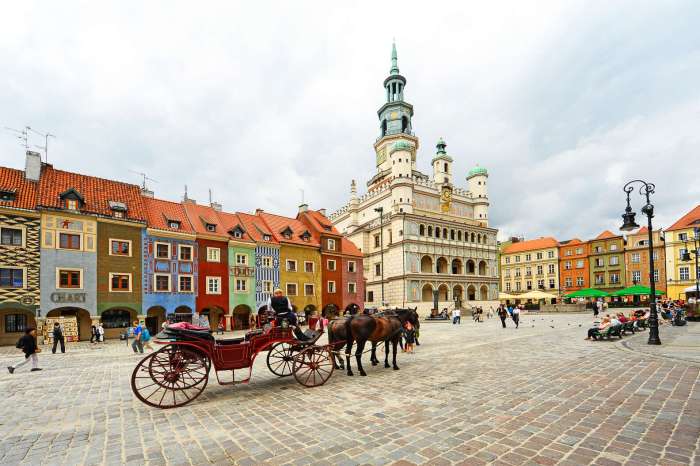
Poland offers more than just historical sites and charming towns; it’s a playground for adrenaline junkies and outdoor enthusiasts. Get ready to push your limits and create memories that will last a lifetime.
Whitewater Rafting on the Dunajec River
Whitewater rafting on the Dunajec River is a thrilling experience that will test your skills and leave you breathless. The river, known for its rapids and stunning natural beauty, offers a variety of routes for all skill levels. Experienced guides will lead you through the rapids, providing instruction and ensuring your safety.
You’ll navigate through narrow gorges, admire towering limestone cliffs, and encounter a diverse ecosystem. The journey is not just about the adrenaline rush; it’s also about connecting with nature and enjoying the tranquility of the surrounding landscape.* Safety Tips:Wear appropriate clothing and footwear, follow the instructions of your guide, and be aware of the water conditions.
Recommendations
Book a tour with a reputable company and choose a route that suits your skill level.
Adventure Companies and Tour Operators
- Dunajec Rafting
- Słowacki Spływ Dunajcem
- Pieniny Rafting
Hiking in the Tatra Mountains
The Tatra Mountains, Poland’s highest mountain range, offer a diverse range of hiking trails for all levels of experience. From leisurely strolls to challenging climbs, you can choose an adventure that matches your fitness level and interests.The Tatra Mountains are home to stunning alpine meadows, towering peaks, and pristine lakes.
You’ll encounter a variety of wildlife, including chamois, marmots, and eagles. The views from the summits are breathtaking, offering panoramic vistas of the surrounding landscape.* Safety Tips:Plan your route, pack essential gear, and be aware of the weather conditions.
Recommendations
Hike with a partner or group, inform someone of your plans, and stay on marked trails.
Adventure Companies and Tour Operators
- Tatra Mountain Guides
- Polish Mountain Rescue
- Tatra National Park
Kayaking on the Masurian Lakes
The Masurian Lake District, known as the “Land of a Thousand Lakes,” is a paradise for kayakers. The calm waters, scenic islands, and lush forests create a tranquil and picturesque setting for exploring. You can paddle through tranquil bays, discover hidden coves, and encounter diverse wildlife.Kayaking is a great way to connect with nature, enjoy the fresh air, and escape the hustle and bustle of city life.
The Masurian Lakes offer a variety of routes for all skill levels, from gentle paddles to more challenging expeditions.* Safety Tips:Wear appropriate clothing and a life jacket, follow the rules of navigation, and be aware of the weather conditions.
Recommendations
Rent a kayak from a reputable company and choose a route that suits your skill level.
Adventure Companies and Tour Operators
- Masurian Kayak Tours
- Masurian Lake District National Park
- Masuria Adventure
Winter Wonderland
Poland transforms into a magical winter wonderland, offering a unique and unforgettable experience for travelers seeking a snowy escape. The country’s charming towns and cities are adorned with festive lights, and the crisp winter air is filled with the aroma of traditional Polish cuisine.
With its snow-covered landscapes and cozy winter vibes, Poland offers a perfect blend of history, culture, and winter adventures.
Top Winter Destinations in Poland
Poland offers a plethora of winter destinations, each with its own unique charm and attractions. Here are three top picks for a memorable winter getaway:
- Zakopane: Nestled in the heart of the Tatra Mountains, Zakopane is a renowned winter resort town. Known as the “Winter Capital of Poland,” Zakopane offers breathtaking mountain scenery, world-class skiing and snowboarding, and a vibrant après-ski scene.
- Krakow: A historic city with a rich cultural heritage, Krakow is a must-visit during winter. The city’s medieval architecture is beautifully adorned with festive lights, and the bustling Christmas markets offer a delightful experience.
- Warsaw: Poland’s capital city, Warsaw, transforms into a winter wonderland during the holiday season. The city’s iconic landmarks are illuminated with festive lights, and the traditional Christmas markets offer a glimpse into Polish culture and traditions.
Winter Attractions and Activities
| Location | Winter Attractions | Activities | Tips for Winter Travel |
|---|---|---|---|
| Zakopane |
|
|
|
| Krakow |
|
|
|
| Warsaw |
|
|
|
Closing Summary
Poland is a country that will capture your heart and leave you wanting more. With its captivating history, vibrant culture, and stunning natural beauty, it’s a destination that will leave a lasting impression. From the ancient castles to the charming cities, from the serene lakes to the majestic mountains, Poland offers a unique and unforgettable experience.
So, pack your bags, book your flight, and prepare to be enchanted by the magic of Poland.
Expert Answers
What is the best time to visit Poland?
The best time to visit Poland depends on your preferences. Spring and autumn offer mild weather and fewer crowds, while summer is perfect for outdoor activities. Winter is ideal for a snowy getaway, with festive markets and winter sports.
Is Poland expensive to visit?
Poland is generally considered an affordable destination, especially compared to other European countries. Accommodation, food, and transportation are relatively inexpensive, but prices may vary depending on your travel style and choices.
Do I need a visa to visit Poland?
Visa requirements for Poland depend on your nationality. Citizens of most European Union countries do not need a visa, but visitors from other countries may need to obtain a visa in advance.
What is the best way to get around Poland?
Poland has a well-developed public transportation system, including trains, buses, and trams. You can also rent a car or explore the country by bicycle. Domestic flights are also available for longer distances.
What are some must-try Polish dishes?
Polish cuisine is hearty and flavorful. Some must-try dishes include pierogi (dumplings), bigos (hunter’s stew), gołąbki (stuffed cabbage rolls), and żurek (sour rye soup).
